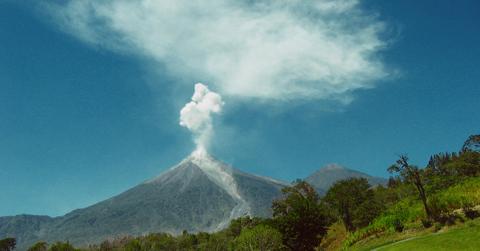Scientists Are Seeking Lithium From Volcanoes For Renewable Energy
The lithium battery industry is going to significantly increase as electric vehicles and battery backup for renewable energy become standard household items. Stanford scientists have found a wealth of lithium in deposits formed in old supervolcanoes.
Updated May 21 2019, 4:32 p.m. ET
Lithium is going to be very important in the future of renewable energy. Storing energy from sustainable sources like wind and solar will likely be required due to the unreliability of nature and our need to stockpile energy. With demand soon to be on the rise, Stanford scientists have been studying a new source where deposits of lithium can be easily found.
At the moment, most of our lithium is imported from Australia and Chile. Here in the United States, most of the natural lithium comes from brine pools in Nevada. It’s certainly not enough to satisfy upcoming demand, but lake deposits in supervolcanoes from the state, along with places like Oregon and Wyoming, may be just as rich in lithium as these leading countries. In fact, one area studied was the McDermitt volcanic field located between the Nevada-Oregon border.
These volcanoes aren’t the normal cone-shaped versions. Instead, supervolcanoes are massive holes in the ground that have filled up with water to create a lake. Since they shoot much more magma than a normal volcano when erupting, the cone-shaped roof collapses. As the lake forms, lithium is generated and turns into hectorite clay.
Thomas Benson, a PhD graduate at Stanford that’s been working on the study since 2012, compares these findings to the Gold Rush of 1849, saying, “We’ve had a gold rush, so we know how, why and where gold occurs, but we never had a lithium rush. The demand for lithium has outpaced the scientific understanding of the resource, so it’s essential for the fundamental science behind these resources to catch up.”
However, not all supervolcanoes are equal, and Stanford researchers have been figuring out the best way to measure these deposits. Lithium can evaporate easily, making it more difficult to work with than other volcanic rocks. Instead of digging up these deposits, they’ve decided to test out crystals in the water that held magma.
Benson and his team was able to determine how much lithium was in the lake through this alternative method. That’s because another material in the magma, zirconium, correlates to lithium. Since zirconium isn’t as volatile, scientists can figure out how much lithium is in the area. If there’s a high concentration of zirconium, that means less lithium is available.
Standard volcanoes already provide geothermal energy, but Benson noted in the study that this has no impact with supervolcanoes. The latter aren’t active, which is needed for the geothermal method. This also makes the mining process in lithium deposits much safer.
While scientists are still figuring out how much lithium can be extracted from these sites, it gives us great potential to avoid a monopoly in the industry. According to Futurism, Benson believes that “[lithium] demand will grow to between 3 and 35 megaton” compared to the 32.5 kilotons currently used annually. Perhaps a modern-day gold rush is on the horizon with these lithium deposits.
